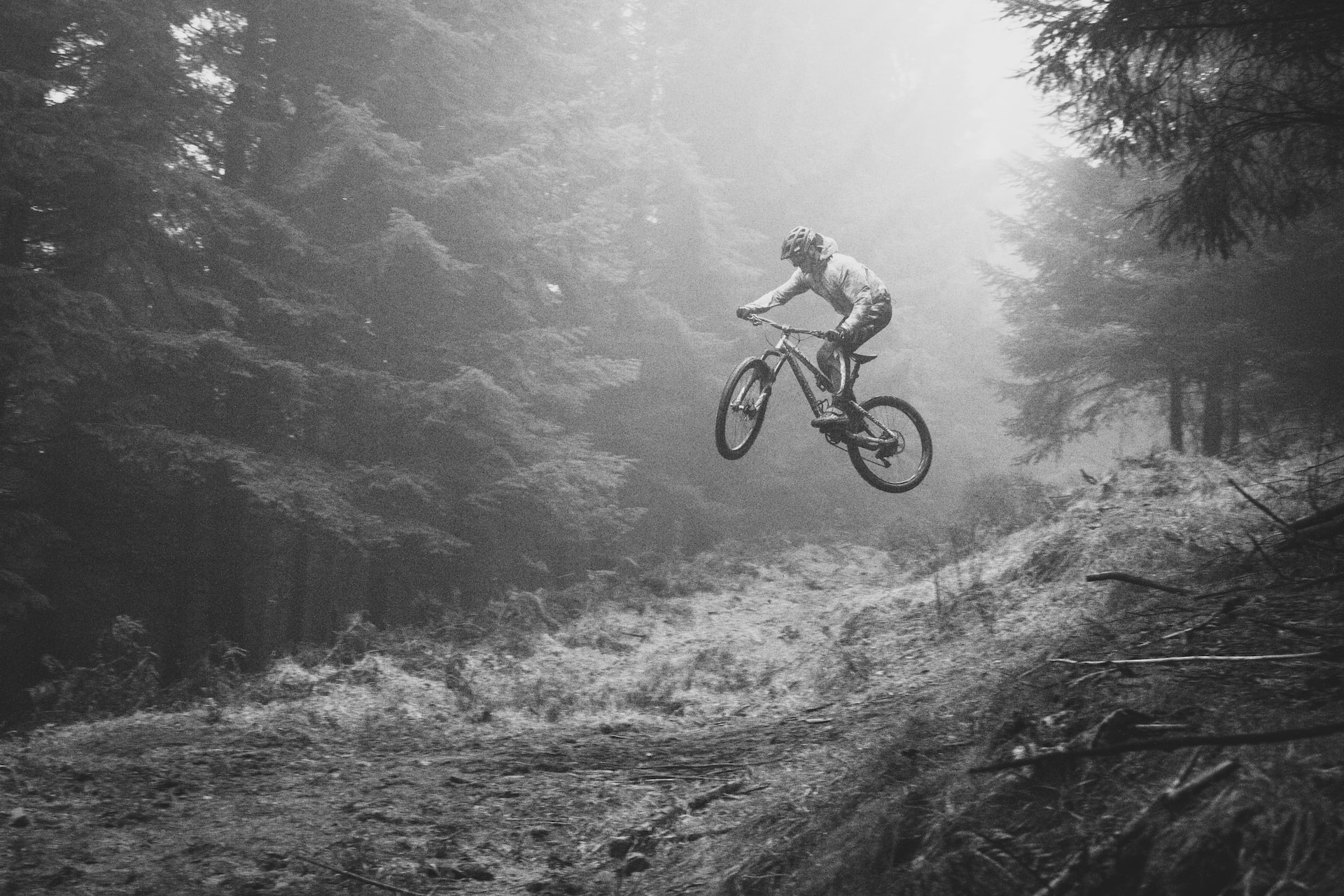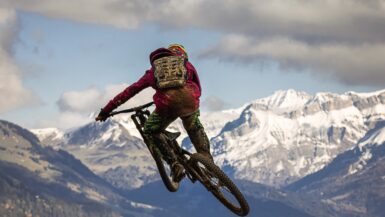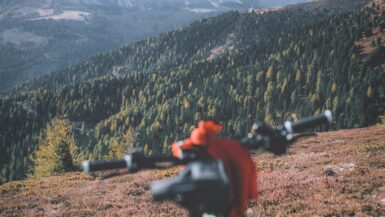Mountain biking is an exciting and challenging sport that people of all ages and skill levels can enjoy. For those looking to up their game and take their mountain biking skills to the next level, it is vital to understand the basics of this sport and practice proper technique. This article will provide tips on improving your mountain biking technique and taking your biking experience to a whole new level.
Gear Selection
Mountain biking requires the right gear to be executed appropriately. The rider’s safety and comfort depend upon suitable clothing and equipment. This includes a well-fitting bike, helmet, gloves, protective padding, and appropriate footwear. As you invest in more gear, your level of enjoyment and safety increases.
Selecting the Right Bike for Mountain Biking
One of the essential pieces of gear for mountain biking is the bike itself. The type of bike you choose depends on your level of skill and the kind of terrain you will be riding on. For inexperienced riders, an entry-level hard-tail mountain bike is a great choice. As you gain more experience, you may want to upgrade to a full-suspension bike designed for more rugged terrain.
Protective Gear for Mountain Biking
When mountain biking, you should always wear a helmet to protect your head in case of a crash. Gloves offer protection against scrapes and bruises and are also beneficial for a better grip on the handlebars. Padding such as elbow and knee guards provide extra protection in case of a fall. Lastly, cycling shoes with cleats will help improve power transfer, stability, and control while riding.
Additional Gear for Mountain Biking
Other mountain biking gear to consider includes a hydration pack, which holds water and supplies needed while riding. For more rugged terrain, a bike repair tool kit is essential. A multi-tool, extra tubes, and a pump should all be included. Additionally, riding at night, you will need a headlight and taillight for added visibility.
When selecting gear for mountain biking, you must consider your experience level, the terrain you will be riding, and the weather conditions. The right gear is essential for having a safe and enjoyable ride.
Body Position
Mountain biking requires core strength to maintain balance and control as you maneuver over rough terrain. When mountain biking, focus on keeping your upper body and legs in sync as you pedal. The key to improve your mountain biking skills is to use your core to control your body weight when cornering, to climb, and braking. To do this, sit upright and use your abdominal muscles to keep your center of gravity in the same spot as you ride.
Maintain Proper Posture
Maintaining a proper posture while mountain biking is essential for managing terrain quickly and effectively. Keep your back straight, your arms slightly bent, and your knees slightly bent. Keep your chin up and your eyes focused at a distant point. This will help you stay in control and keep your balance.
Use Your Arms and Legs
Your arms and legs are essential for controlling the bike. When cornering, your arms help to keep the cycle steady, and your legs give you the power to maximize speed. When climbing, your arms allow you to remain upright while your legs provide balance and strength to you forward. When braking, use your arms to absorb shocks from impacts and your legs to provide extra stopping power.
Lean Into Terrain
Leaning into the terrain is a vital mountain biking technique that helps you maintain balance and control. This technique allows you to adjust your body to remain balanced when riding over rougher terrain. When tackling rocks or roots, lean into the landscape to increase grip and decrease the impact. When riding downhill, lean back slightly and extend your arms and legs to absorb shock and create a better balance.
Cornering Techniques
For every mountain biker, cornering is one of the most important skills to perfect. Before you hit the trails, learning the basics of cornering is essential for maximum safety and control. To corner effectively, you must have confidence in your bike, trust your technique, and get the most out of your bike’s traction.
Focusing on Confidence and Balance
Confidence is vital when it comes to cornering. Pushing yourself to go faster while cornering can lead to big accident, so it’s essential to stay within your comfort zone. Keep your weight on the front of the bike and evenly distributed. This will allow you to steer precisely and prevent your bike from sliding from underneath you.
Positioning Yourself for Maximum Traction
When cornering, you want to take advantage of your bike’s traction as much as possible. Try to stay close to the inside of the corner. This will put more weight on the outside of the tire, giving you improved traction and better control when taking the corner. If there are any bumps or rocks, move away from them and keep your bike outside the hub.
Maintaining Momentum While Cornering
Maintaining momentum is critical when cornering. You want to approach the corner with enough speed to carry you through the turn but not too much speed to cause you to lose control. As you enter the intersection, stand up on the pedals and use your body weight to provide extra traction. Keep your arms and elbows bent to absorb the bumps and stay balanced.
Finally, exit the corner with a burst of acceleration, using the momentum of the turn to help you power through.
Using the Right Gear for Cornering
Having the right gear is essential for cornering. Ensure your tires are in good condition, with plenty of treads left for grip. If you’re spending a lot of time cornering, consider investing in tires designed explicitly for cornering. Additionally, ensure that your bike is tuned properly and that the brakes are working correctly.
Finally, practice cornering with a helmet and other safety gear to protect yourself in case of an accident.
Practicing For Perfection
Mastering cornering takes practice. Start by slowly taking corners at first and gradually build up your speed. With time, you’ll gain the confidence and skill to stay in control while cornering at high speeds.
Good luck with your cornering!
Breaking and Descending
Mountain biking involves tackling uphill climbs as often as it does downhill. Keeping your energy up during the climbs is an essential technique for improving your mountain bike skills. Start by getting into the correct riding position. Not only does this help with traction, but it also helps distribute your weight over the rear tire for better power transfer to the pedals. Use your gears to make the climb more accessible by selecting the right equipment for the rate at which you can pedal. Stay relaxed and take your time to conserve energy while also focusing on staying low and aerodynamic.
Maintaining Control on Descents
When descending, the vital thing to remember is to keep your weight back and your eyes focused on the turns and terrain. Choose the right line and use your gears to slow down, allowing you to stay in control and maintain speed. Learn to use your brakes correctly and use your body weight to remain balanced as you make your way down the hill.
Developing Balance and Agility
Mountain biking requires more balance and agility than road cycling. Regular practice is key to developing the necessary coordination and control to navigate mountain terrain. Riding with friends is one way to practice these skills. You can also find trails and courses that offer different levels of difficulty. Focus on mastering basic biking skills before taking more challenging courses, and gradually build up your skills.
Creating Smoother Turns
Making smooth turns is a vital mountain biking technique. When you approach a sharp corner, take the inside line while shifting your weight to the outside of the bike. Look ahead, focus on the corner exit, and keep your pedaling smooth and steady. When exiting a turn, shift your weight back to the center and get back on the power as soon as you get out of the corner. Practicing these techniques regularly will help you develop the skills necessary to handle any terrain.
Climbing and Pedalling Technique
In mountain biking, your most important resource is your body. The correct use of gears, brakes, and posture can make all the difference in improving your mountain bike skills.
Gearing Up
Gearing is vital in mountain biking as it can help you ascend and descend hills more efficiently. Having the right gear for a particular terrain will help you climb and pedal uphill without overworking your muscles. Make sure you switch to a low gear before going uphill and then switch back to a higher gear when going downhill.
Braking
Using your brakes properly is also essential when mountain biking. Try to balance your braking with your pedaling to maintain a smooth ride. Braking too abruptly can cause the bike to lose control and make it more challenging to stay upright.
Posture
Maintaining a good riding posture is essential in mountain biking. Keep your back straight, head up, and shoulders back to ensure optimal balance and control of your bike. Keep your feet flat on the pedals, and avoid leaning too far forward or backward, as this can lead to losing balance and control.
Mental Preparation and Focus
Mountain biking is a physical and mental challenge. To become a proficient mountain biker and improving your mountain bike skills, it is vital to develop a proper mindset. You must have the right attitude and approach to the sport to maximize your potential. Mental preparation and focus are essential for improving your mountain biking technique.
Visualize Your Success
Visualization is an integral part of mental preparation for mountain biking. Before you start your ride, take a few moments to visualize yourself succeeding – riding over the obstacles, navigating tight turns, and mastering technical sections. By picturing yourself succeeding in your mind, you can increase your confidence and ensure that you are mentally prepared for the ride.
Improve Concentration
Mountain biking requires you to stay focused and concentrate on the tasks. Maintaining concentration ensures you don’t make costly mistakes, such as losing your balance or miscalculating turns. Practice focusing on the present moment and be aware of the terrain, speed, and body movements. This way, you can ensure that you are optimally prepared for the ride.
Be Flexible and Adaptable
The terrain you are navigating can quickly change, so you must be prepared to adjust your technique to the situation. Flexibility and adaptability will allow you to make the most of the terrain while improving your mountain biking technique. Practice riding in different conditions and be prepared to alter your approach and style depending on the landscape.
Mastering the Right Posture
One of the most important things to remember when improving your mountain biking skills is maintaining the correct posture and staying balanced. Keeping your arms and legs slightly bent while riding helps absorb bumps and shocks from the terrain. Additionally, ensure you look ahead, stay centered on your bike, and evenly distribute your weight. Furthermore, try to move your body with the terrain and stay relaxed throughout the ride. When going uphill, keep your front wheel light and your elbows bent. While going downhill, lean into the curves for more balance and control.
With these tips, you’ll be able to effectively improve your mountain biking technique and eventually become an expert.






Leave a reply